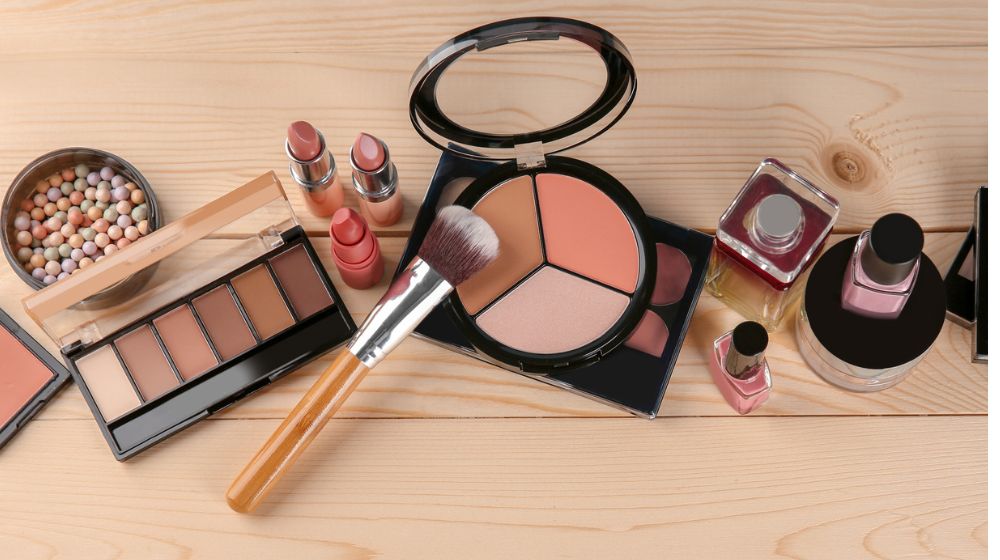


In recent years, due to the expansion of China’s middle class, increased interest in personal care has led to the rapid development of the cosmetics industry. In addition, the adjustment of the tariff system in China and the rise of e-commerce platforms like Taobao or Jindong also contributed to the sales of cosmetics products. The industry shows an annual growth of 12% and broke the RMB 200 billion mark of sales volume in 2015. The most successful products are skincare products, including moisturisers and masks, products safe for children, anti-aging products, spot-removal products, and sunscreen and whitening products.
In this market, image and trustworthiness are paramount. Chinese cosmetics consumers are more resilient to advertising and increasing influenced by peer recommendations, meaning that consistent, favourable mentions through social media such as WeChat groups are the pillars of sales growth. At the same time, the production and sale of fake and inferior products continue to be prevalent in the Chinese market – despite recent campaigns and targeted efforts of the Chinese government. Particularly, due to their popularity and high quality, overseas cosmetics brands are the usual victims of counterfeiting. The infringement acts are mainly trademark and outer packaging imitation, and customers consequently confuse the authentic and counterfeit products, leading to loss of sales, reputation and oftentimes product liability issues. Thus, for cosmetics enterprises, wishing to enter to China, it is still very important to have a robust IP strategy in place.
Protecting Trade Marks
Trademarks are extremely important in the cosmetics industry because Chinese consumers are very trade mark sensitive and prefer to buy the products from traders they can trust. Chinese trademark protection follows a first-to-file principle, meaning that the China Trade Mark Office (CTMO) will grant trademark rights to the company that filed the application first.
As a result, there are numerous bad-faith registrants who expect unjustified interests by registering foreign trademarks with reputation or potential before the overseas company enters the Chinese market. Once these registrations are approved, the entry of products owned by the real trademark owner into China will be blocked. Hence, if a foreign enterprise intends to enter the Chinese market, it is advisable to file the trademark application in advance and as soon as possible.
When registering a trademark in China, SMEs should keep in mind that trademark registration classes are further divided into sub-classes in China. It is important to register the trademark for the correct class and subclasses. If sub-classes are not designated in the application, the CTMO examiner will decide which subclasses registration the applicant will receive, which might not be the most desired one for the applicant. Furthermore, if an SME forgets to register in all of the relevant subclasses, unscrupulous companies may register the SME’s trademark in these subclasses themselves.
Consider Also Protecting the Chinese Version of the Trade Mark
Cosmetics are fast developing consumer goods, and whether the name will be remembered by local consumers is vital to firm’s success. Besides, consumers tend to mention a foreign brand by using its Chinese name. Once the localised name is registered, the owner of the original trademark in a foreign language will have to change the Chinese translation of his trademark. Therefore, it is suggested that both the foreign language and the Chinese version of the trade mark should be registered before the product’s entry into the Chinese market.
Protecting Cosmetic Products with Patents
The Chinese patent system covers three types of patent, i.e. invention patent, utility model (UM) patent and design patent, each of these having different levels of requirement on inventiveness. An invention patent refers to new technical solution relating to a product, a process or improvement, therefore; a UM is more for a new solution relating to the shape, the structure or some combination of the two of a product, with relatively low inventiveness.
Patent applications in cosmetic industry mainly involve improvement of products and methods, specifically involving the improvement of product structure (e.g. the improvement of compound or polymer structure), the improvement of product composition (e.g. the improvement of component of cosmetics composition), and the improvement of production process (e.g. the addition or reduction of processing steps, improvement of processing conditions).
Patent protection in china also functions under the first-to-file principle, which means that the one who applies for the patent first will have the priority to obtain the patent right. Therefore, after the development of a new cosmetics or a new method of producing cosmetics, an SME should file a patent application early so as to obtain the patent right as soon as possible.
There are also other patent filing strategies that the cosmetics producers should consider. For example, when a patent application is filed for a new cosmetics or a new producing method, patent applications for improved cosmetics or improved methods developed based on this cosmetics or producing method should be filed at the same time or later. Patents for this kind of invention should be filed so as to prolong the protection period of the basic patent by forming a patent chain. By this approach, an SME can effectively fight against possible infringement by competitors.
Trade Dress
Trade dress refers to the size, shape, colour or combination of colours, structure, patterns, as well as manners in which a product is presented, marketed etc. Due to lack of “trade dress” provisions in China, the protection for these aspects can be sought through several ways including copyright and design patents. In the cosmetics industry, copyright protection is mainly applicable to original and aesthetic labels, decoration patterns, packages, manuals and advertisement.
Design patents cover the overall shape and style of packaging which sets apart many brands’ products. It also covers the packaging which is used for box or gift sets, as well as the packaging which goes around smaller cosmetics. SMEs should keep in mind that the objects of design need to comply with the requirements of “absolute novelty” (meaning that the design is undisclosed to the public either in China or abroad before the filing date), inventiveness and practical applicability of the products.
Additional Protection Methods
Besides traditional approaches of IP rights protection, security labels and security codes are also popular in protecting cosmetics products. For instance, cosmetic producers could cooperate with the Authentic Cosmetics Alliance of China, which is a well-known anti-counterfeiting platform specifically for cosmetics products. It grants exclusive security codes that are specially made by the Alliance to its cosmetics manufacturer members and which allow the consumers to check the authenticity of cosmetics online.
Enforcement of IP Rights
IP rights can be enforced through sending cease and desist letters, through administrative actions, customs seizures and through civil litigation.
Cease and desist letters are sent by lawyers to the infringers to notify them and request to cease infringement by showing relevant IP rights. Cease and desist letters work best in protecting copyrights and are a cheap option of enforcement as there is no need for notarizing the evidence. At the same time, the infringers can easily disregard the letters.
Administrative actions are mostly used in the cases of trademark and copyright infringement and to a lesser extent in design patent enforcement. Administrative authorities are entitled to issue administrative punishment decisions and seize the infringing products. Administrative proceedings are faster than court rulings and can be effective in stopping the infringers, but the authorities will not have the right to award damages. For claiming damages, parallel civil suits need to be filed.
Civil courts can order injunctions and award compensation, making civil litigation a good way to stop infringements. At the same time, civil litigations are costly and time-consuming and require comprehensive, notarized evidence.
In case of trademark infringement, IP owners can also benefit from customs seizures. Once the IP rights are recorded with the General Administration of Customs (GACC), the local customs will check and seize suspected infringing products. The customs are however less effective at helping to protect patent rights as they may not be qualified enough to determine whether a product falls within the protection scope of a patent for the invention.
Companies who sell their products in China via the most popular e-commerce platforms like Alibaba and Taobao can also initiate notice and takedown procedures in case of trademark, copyright or design infringement. For this, the product owner needs to request initiating notice and takedown procedures. Based on the information provided by the trademark owner, the sale of products can be discontinued or the seller prohibited from the website. It is cost- and time-effective way of dealing with infringements and the procedures can be initiated also in English. Sometimes, however, the platform might decide against the SME’s request. In this case, the rights’ owner can provide more supportive evidence or initiate relevant litigation to claim infringement against the infringer together with the owner of the platform.
China IPR SME Helpdesk Team
The China IPR SME Helpdesk supports small and medium sized enterprises (SMEs) from European Union (EU) member states to protect and enforce their Intellectual Property Rights (IPR) in or relating to China, Hong Kong, Macao and Taiwan, through the provision of free information and services. The Helpdesk provides jargon-free, first-line, confidential advice on intellectual property and related issues, along with training events, materials and online resources. Individual SMEs and SME intermediaries can submit their IPR queries via email (question@china-iprhelpdesk.eu) and gain access to a panel of experts, in order to receive free and confidential first-line advice within 3 working days.
The China IPR SME Helpdesk is co-funded by the European Union.
To learn more about the China IPR SME Helpdesk and any aspect of intellectual property rights in China, please visit our online portal at http://www.ipr-hub.eu/.